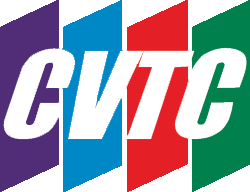How many Canadians use social media? Or online news sites to get their information? Or use sites like YouTube to watch videos? And how many people take everything they read online with a grain of salt or with far too much trust?
According to madeinca.ca, there are over 36 million internet users and 31.9 million social media users in Canada. Facebook still dominated the list in 2024 at over 23 million Canadian users and most Canadians use social media and messaging apps to stay in touch with others.
Think about the spread of information as well. News articles, headlines, videos, snippets of quotes, images, and more cross our feeds every day and every hour. It can be very hard to disseminate it all, leading to many people just hitting the ‘share’ button if it’s something that even vaguely resonates with them. Whether the snippet is true, taken out of context or completely false doesn’t always cross our minds, leading to a surge in a spread of misinformation and disinformation. And in fact, it could well be argued that the more extreme the view is being shared (or controversial or otherwise emotion evoking), the faster it spreads; after all, information like that tends to get more ‘clicks’ and a wider audience. ‘Rage-baiting’ or ‘rage-farming’ are the most common phrases linked to this phenomenon, the idea being that by taking on more extreme or emotional stances, it’s easier to get your message spread farther and it’s more like to make money for you through the monetization of your social media.
It’s becoming a serious problem with many experts saying that the disinformation spread has been linked to things like elections, falling vaccination rates, a lack of trust in experts, and a growing trend towards a disdain of science, medicine, and other technical fields in particular. It’s also been linked to rising rates of depression in youth and young adults, violence towards women, POC and the LGBT+ community, and the rise of ‘echo chambers’ where people get sucked into hearing only what they want to hear and end up being shielded (inadvertently at first and then purposefully) from differing opinions.
Is it all bad? Of course not; online media has also saved lives, spread good information, allows people to be connected to each other, allows people to find each other based on mutual interests, and allows for greater accessibility for people with disabilities. But in order to get the good, it’s important to be aware of the bad and know how to handle it.
This series of blogs is going to look at media literacy and how to improve it for yourself, your family, your friends, and even your children. Media literacy is the ability to apply critical thinking skills to the information that is transmitted through mass media. It used to be applied simply to things like television, newspapers, and radio, but now we can apply those same skills to social media and websites to make sure that we aren’t spreading false information or losing sleep and peace over media posts.
A couple of terms to keep in mind as you move through this series of posts:
Media literacy: The ability to critically think about what you are reading/watching/listening to. This means being willing to open your mind to the information, but also ask critical questions of it such as: who is pushing this story? What is the purpose of this story? How does it make you feel a certain way? What citations is the story pulling from (if any)? We’ll talk more about that later.
Rage-Farming/Rage-Baiting: The practice of spreading posts that are emotive, usually negative (not necessarily rage, but this is common). The idea is to make the post spread far too quickly and widely to be easily stopped, usually by people sharing the post or interacting with it, because the person who created the post makes money off engagement with that post.
Trolling: Taking a stance on something that is often exasperating, frustrating, infuriating, hate-inducing, or otherwise instigate some sort of emotion. It’s a way to farm engagement, bully others, or simply live rent free in strangers’ heads. The ‘troll’ doesn’t generally actually believe what they are saying; they are just trying to get attention and engagement.
Misinformation: Misinformation is false information that is spread, regardless of intent to mislead. Misinformation is very common; it usually just means that someone made a mistake. Misinformation doesn’t ‘care’ about the intent of the spreading; it could be completely benign or malicious and everything in between.
Disinformation: Disinformation is also false information that is spread, but the intent does matter. In this case, the intent is to deliberate misleading or bias others. It’s tied to manipulation of a story or facts or propaganda. It’s thought that disinformation has lead to the spread of alt-right politicians who use it as a way to get voters on their side and keep them there, but disinformation is hard to prove as it’s hard to prove intent.
It’s important to keep some of these terms in mind as being aware of them already puts on a good road towards stronger media literacy.
In the next post, we will look at how to apply critical thinking to social media posts and what questions are important to ask while reading the information to determine whether it’s something that should be shared or not.


